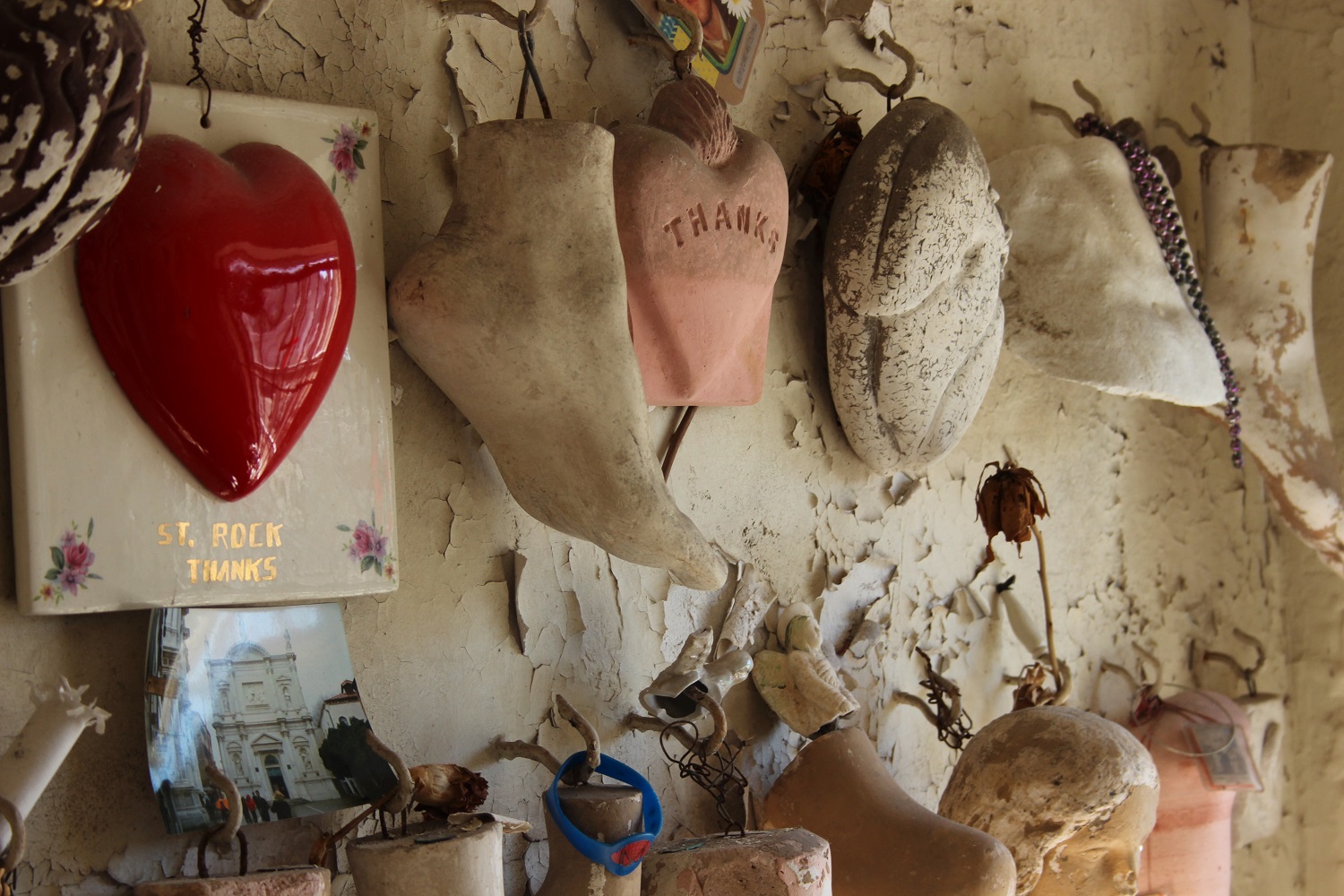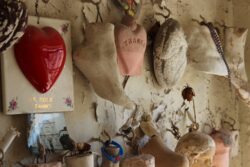The Leg-Brace Saint
New Orleans’s St. Roch Chapel gets a facelift
Published: August 29, 2022
Last Updated: June 1, 2023

Photo by Cheré Dastugue Coen
Thevis remembered how residents of his home country prayed to St. Roch in times of plague and pestilence. Roch had survived the plague in fourteenth-century Italy and assisted those still suffering in public hospitals. Thevis led his parishioners of Holy Trinity in prayer to the French saint and promised to build a chapel in St. Roch’s honor for his intercession.
“No one in his congregation succumbed to yellow fever, which was huge because so many people in New Orleans died that year,” said Heather Veneziano, director of public engagement and development at New Orleans Catholic Cemeteries. “The St. Roch Chapel was built as an offering of thanks.”
St. Roch Cemetery No. 1 was dedicated in 1875, with the Gothic chapel following on the Feast of St. Roch, August 16, 1876.
Thevis died in 1893 and is buried under the central aisle of St. Roch Chapel. His devotion to St. Roch lives on in the thousands of people who have visited the small but exquisite chapel. Because St. Roch is the patron saint of the sick and invalid, visitors who prayed for his intercession often leave behind “ex-votos,” tokens such as leg braces and crutches in gratitude for the recovery of those he had healed.
The National Shrine of St. Roch in New Orleans remains the only American chapel dedicated to the French saint.
The years took their toll on the petite chapel, especially after Hurricane Katrina’s floodwaters inundated the building. Termites ate through the window frames, and modern electrical wiring was needed. Moisture became trapped inside a layer of aluminum paneling and cement in interior brick walls. Vaults in the lower walls of the nave required work as well.
In 2017, New Orleans Catholic Cemeteries began a thorough renovation, which included restoring the 324-square-foot nave, restoring and reconfiguring thirty-six double-niches to be used for future interments, adding new lighting, and repainting the vaulted ceiling in vibrant blue and gold.
The retable—the shelved unit composed of African mahogany, Spanish cedar, and cypress, with six painted scenes reflecting the life of St. Roch by New Orleans artist Renato de Guzman—had suffered heavy termite and water damage. Master carpenter Juan Montoya disassembled the retable for restoration and added missing features.
During the retable’s reprise, project manager Joseph Connor discovered a faded portrait of Jesus adorned with a crown of thorns. The painting was then restored by Italian-born New Orleans resident art conservator Alessia Filetti to be displayed in the chapel for its rededication, future Masses, and special occasions. A duplicate of the painting will reside in the chapel the rest of the time.
The side room that contains the ex-votos was untouched, Veneziano said, besides the improvements to the chapel’s roof.
“We didn’t disturb that room because the ex-votos mean a lot of things to a lot of people,” she said. “People are very protective of those offerings.”
New to the chapel are two donations by Lynda Moreau: a first-class St. Roch relic and a statue of St. Roch that Veneziano found in a Texas antique store. The statue originally hails from a French village not far from St. Roch’s native town of Montpellier.
The four-year restoration process followed the Secretary of the Interior’s Standards for Rehabilitation, the same used by the National Park Service. For instance, the walls were re-plastered and painted with lime-based products that allow Louisiana moisture to flow through without harming the structure.
“We always use National Park Service guidelines because they’re the highest standards of restoration,” said Veneziano. “It’s more costly to do it the right way, but it will last a lot longer.”
Cheré Dastugue Coen is a food and travel writer. She is the author of Exploring Cajun Country and Haunted Lafayette, Louisiana, plus Louisiana novels under the pen name of Cherie Claire.
